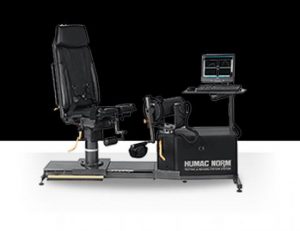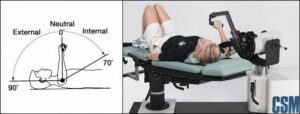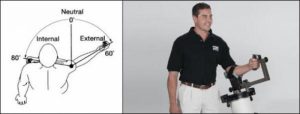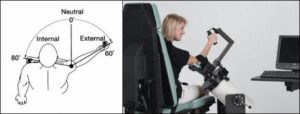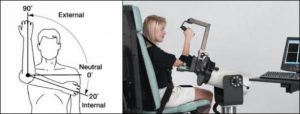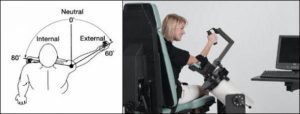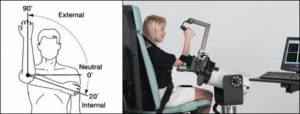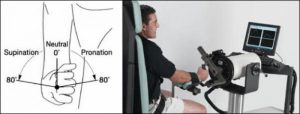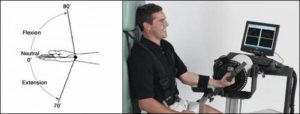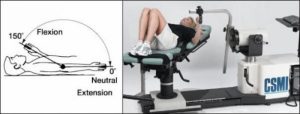Isocinético Humac Norm
O HUMAC NORM é a sua solução para melhorar e avaliar a perfomance humana em clinica, centros de treino e laboratorios de investigação. Numa só maquina o HUMAC NORM apresenta 22 modelos de movimento para articulações isoladas, quatro modos de resistencia (isocinetico, isotonico, isometrico e passivo) e inumeros relatorios de modo a ir de encontro com as necesidades dos clinicos e investigadores de hoje
Garantia: 2 anos
Aviso!
OS VALORES ACIMA SÃO EM DÓLARES AMERICANOS PARA IMPORTAÇÃO DIRETA PELO CONSUMIDOR FINAL E ESTAO SUJEITOS AO GRAVAME DE IMPOSTOS DE IMPORTAÇÃO E TAXAS ALFANDEGARIAS.
Descrição
Apresentamos o Isocinético Humac Norm
O HUMAC NORM é a sua solução para melhorar e avaliar a perfomance humana em clinica, centros de treino e laboratorios de investigação. Numa só maquina o HUMAC NORM apresenta 22 modelos de movimento para articulações isoladas, quatro modos de resistencia (isocinetico, isotonico, isometrico e passivo) e inumeros relatorios de modo a ir de encontro com as necesidades dos clinicos e investigadores de hoje.
Medição Apenas testando se pode determinar linhas de orientação, objectivos e alterações. O HUMAC NORM ofereçe duas soluções de medição primárias.
• Teste Isometrico: Quando o movimento dinamico é uma preocupação, o teste isométrico é a resposta. O HUMAC NORM posicionará o paciente de forma segura em cada angulo do protocolo. As opções do protocolo incluem angulos, tempos de trabalho, tempos de pausa, repetições e series.
• Teste Isocinético: Para determinar a capacidade dinâmica maxima durante a amplitude de movimento o teste isocinético é a solução. O HUMAC NORM testa resistencia concentrica e excentrica. Os resultados da curva isocinetica facilitam a determinação das areas de dor ou fraqueza e defenir a capacidade.
Exercicio Exercico é executado para melhorar a mobilidade, estabilidade, força e controle. O HUMAC NORM ofereçe quatro modos de resistencia e inumeras opções de feedback para atingir estes objectivos.
• Modo Passivo: Desenvolver a mobilidade que o paciente exige, desde modelos de movimento lineares até mode los complexos PNF.
• Modo Isometrico: Estabilizar a articulação para executar treino de força em angulos especificos.
• Modo Isocinetico: Fortalecimento continuo utilizando metodos comprovados permitindo o retorno á função incluindo cargas concentricas e excentricas e treino de desacelaração.
• Modo Isotonico: complete o treino de retorno á função usando o nosso modo simulado de massa isotonica.
Software O Software HUMAC foi concebido com um objectivo – permitir ao utilizador ir dos dados de paciente até ao relatorio na mão o mais rapido possivel. O Tempo é uma comodidade em todos ajustes. Esta é a razão da escolha do sistema Windows XP para o Software HUMAC. É reconhecivel imediatamente por todos os utilizadores, permitindo aprender e operar o HUMAC NORM rapidamente. Passos Intuitivos TPara realizar um teste ou um exercico apenas slecione um paciente, modelo de movimento, protocolo e prepare-se para iniciar a sessão. Na proxima vez que o paciente estiver no HUMAC NORM o processo será ainda mais rapido. Selecione Quick Test ou QuickEx para ir directamente da selecção de paciente para a sessão. O HUMAC automaticamente assume o teste ou protocolo de exercicio utilizado na ultima sessão. Personalize as Suas Preferencias Os ajustes de Preferencias no HUMAC dão-lhe a flexibilidade de personalizar o software de acordo com as suas necessidades especificas. Opções de Preferencia incluem Feedback, Analise de Dados e Relatorios. O seu Software nunca ficará obsoleto a CSMI continua a desenvolver o Software HUMAC. E garantimos que o Software HUMAC seja sempre compativel mesmo com equipamentos antigos. Desde o primeiro CYBEX II até ao ultimo HUMAC NORM, o seu investimento nunca ficará obsoleto.
Detalhes
Mode | Speeds | Torque |
|---|---|---|
Isokinetic Concentric | 500 per sec | 500 ft-lbs / 678 Nm |
Isokinetic Eccentric | 500 per sec | 500 ft-lbs / 678 Nm |
CPM | 500 per sec | 500 ft-lbs / 678 Nm |
Isometric | 500 ft-lbs / 678 Nm | |
Isotonic | 500 ft-lbs / 678 Nm |
POWER REQUIREMENTS
Input Voltage | 220 VAC (other voltages available) |
|---|---|
Input Frequency | 60Hz (international frequency 50Hz available) |
Independent | 20 amp dedicated circuit required |
SUGGESTED FLOOR PLAN:

Manufacturing
HUMAC NORM Systems are manufactured just outside Boston in Stoughton, Massachusetts, USA. The HUMAC NORM consists of four component groups – metal fabrication, computer, electronics, and software. The manufacturing process is performed under our ISO9001 Certification Process.
Metal fabrication (cut, weld, and paint) is performed by a nearby specialty custom fabrication facility. Computers are supplied by DELL Computers, the world leader in small computer systems. Custom circuit boards are designed in-house and manufactured by a nearby fabrication house. Lastly our HUMAC Software is developed and produced in-house.
The HUMAC NORM components are gathered at our corporate facility for final assembly, testing, and packaging. We ship HUMACs worldwide, with customers throughout the US, Great Britain, and elsewhere.
Regulatory Approvals
- CENELEC EN 60601-1-2 – 2001 – Medical Electrical Equipment Part 1-2: General Requirements for Safety – Collateral Standard: Electromagnetic Compatibility – Requirements and Tests IEC 60601-1-2: 2001.
- CENELEC EN 60601-1 – Medical Electrical Equipment Part 1: General Requirements for Safety Incorporates Corrigendum July 1994; Includes Amendments A1: 1993, A11: 1993, A12: 1993, A2: 1995 and A13: 1996; IEC 601-1: 1988 + A1: 1991 + A2: 1995 + Corrigendum 1995, Modified.
- UL 60601-1 – UL Standard for Safety Medical Electrical Equipment, Part 1: General Requirements for Safety First Edition.
- CSA C22.2 NO 601.1-M90 – Medical Electrical Equipment – Part 1: General Requirements for Safety General Instruction No 1; Supplement 1; 1994 R(1997).
- IEC 60601-1-1 (1992-01) – Medical Electrical Equipment Part 1: General Requirements for Safety 1. Collateral Standard: Safety Requirements for Medical Electrical Systems First Edition.
- IEC 60601-1 – Medical Electrical Equipment Part 1: General Requirements for Safety Second Edition.
CSMi Quality Certification
- ISO 9001:1994 and ISO 13485:1196 with CMDCAS.
SHOULDER: ABDUCTION / ADDUCTION

Axis of Rotation:
The instantaneous axis of rotation changes throughout the movement. The compromise axis is medial to the acromion process when the limb is in the neutral position.
Parts Needed:
Elbow/Shoulder Adapter
Footrest
Lumbar Cushion
SHOULDER: EXTENSION / FLEXION

Axis of Rotation:
The instantaneous axis of rotation changes throughout the movement. The compromise axis is medial to the acromion process when the limb is in the neutral position.
Parts Needed:
Elbow/Shoulder Adapter
Footrest
SHOULDER: HORIZONTAL ABDUCTION / ADDUCTION

Axis of Rotation:
The instantaneous axis of rotation changes throughout the movement. The compromise axis is medial to the acromion process when the limb is in 90° horizontal abduction.
Parts Needed:
Elbow/Shoulder Adapter
Footrest
Torso Belt
SHOULDER: INTERNAL / EXTERNAL ROTATION IN 90° ABDUCTION

Axis of Rotation:
The instantaneous axis of rotation changes throughout the movement. The compromise axis is medial to the acromion process when the limb is in 90° horizontal abduction.
Parts Needed:
Elbow/Shoulder Adapter
Footrest
Torso Belt
SHOULDER: INTERNAL / EXTERNAL ROTATION, MOD STANDING

Axis of Rotation:
The axis of rotation is the longitudinal axis of the humerus.
Parts Needed:
Wrist/Shoulder Adapter
Elbow Stabilizer Pad
SHOULDER: INTERNAL / EXTERNAL ROTATION, MOD SEATED

Axis of Rotation:
The axis of rotation is the longitudinal axis of the humerus.
Parts Needed:
Wrist/Shoulder Adapter
Elbow Stabilizer Pad
Lumbar Cushion
SHOULDER: INTERNAL / EXTERNAL ROTATION IN 90° FLEXION

Axis of Rotation:
The axis of rotation is the longitudinal axis of the humerus. If length adjustment of wrist / shoulder adapter is correct, and elbow flexed at 90° with forearm parallel to input arm, the axis alignment will be established and maintained by the Elbow Stabilization Pad.
Parts Needed:
Wrist/Shoulder Adapter
Elbow Stabilizer Pad
PNF D1: FLEXION – ADDUCTION / EXTENSION – ABDUCTION

Axis of Rotation:
The instantaneous axis of rotation changes throughout the movement. The compromise axis is medial to the acromion process when the limb is in the neutral position. The motion for this pattern begins in full Extension-Abduction and moves to full Flexion-Adduction, the limb should be supinated and externally rotated.
Parts Needed:
Elbow/Shoulder
Adapter Footrest
ELBOW: EXTENSION / FLEXION

Axis of Rotation:
The axis of rotation is immediately distal to the lateral epicondyle and moves only slightly anteriorly as flexion increases.
Parts Needed:
Elbow/Shoulder Adapter
Footrest
Lumbar Cushion
WRIST / FOREARM: PRONATION / SUPINATION

Axis of Rotation:
The axis of rotation bisects the head of the ulna distally and the head of the radius proximally. It is established by placing the forearm directly in line with the dot on the dynamometer input tube at approximately the level of the ring finger.
Parts Needed:
Thigh/Forearm Stabilizer Tube
Forearm Stabilizer V-Pad
Wrist/Shoulder Adapter
Lumbar Cushion
Counterbalance Weight
WRIST: EXTENSION / FLEXION

Axis of Rotation:
This axis alignment is critical and somewhat difficult in the pattern. The axis of rotation is slightly oblique passing through the wrist just distal to the tubercle of the radius and the head of the ulna (approximately where the hand meets the wrist).
Parts Needed:
Thigh/Forearm Stabilizer Tube
Forearm Stabilizer V-pad
Wrist/Shoulder Adapter
Lumbar Cushion
WRIST: RADIAL / ULNAR DEVIATION

Axis of Rotation:
The axis of rotation is located approximately at the center of the capitate bone. This is found at the middle of the wrist just distal to the axis for extension/flexion.
Parts Needed:
Thigh/Forearm Stabilizer Tube
Forearm Stabilizer V-pad
Wrist/Shoulder Adapter
Lumbar Cushion
HIP: ABDUCTION / ADDUCTION

Axis of Rotation:
The axis of rotation is superior and medial to the greater trochanter.
Parts Needed:
Knee/Hip Adapter
Knee/Hip Pad
HIP: FLEXION / EXTENSION

Axis of Rotation:
The axis of rotation is slightly anterior in extreme flexion as the pelvis tilts to increase range of motion. The normal movement synergy does not affect testing accuracy.
Parts Needed:
Knee/Hip Adapter
Knee/Hip Pad
Footrest
HIP: INTERNAL / EXTERNAL ROTATION

Axis of Rotation:
The axis of rotation is a mechanical axis of the femur (line through centers of hip and knee joints). This can be visualized, approximated and then fine adjusted during warm up/familiarization repetitions.
Parts Needed:
Ankle Adapter
Footplate
Footrest
KNEE: EXTENSION / FLEXION SEATED

Axis of Rotation:
The most accurate fixed axis for rehab or testing of the knee is a line passing transversely through the femoral condyles.
Parts Needed:
Contralateral Limb Stabilizer
Knee/Hip Adapter
Knee/Hip Pad
Lumbar Cushion
KNEE: EXTENSION / FLEXION PRONE

Axis of Rotation:
The most accurate fixed axis for rehab or testing of the knee is a line passing transversely through the femoral condyles.
Parts Needed:
Knee/Hip Adapter
Knee/Hip Pad
KNEE: TIBIAL INTERNAL / EXTERNAL ROTATION

Axis of Rotation:
The axis of rotation is slightly medial to the longitudinal axis of the tibia. This can be visualized, approximated and then fine adjusted during warm up/familiarization repetitions.
Parts Needed:
Ankle Adapter
Footplate
Thigh Stabilizer Pad
Thigh/Forearm Stabilizer Tube
Footres
ANKLE: PLANTAR / DORSIFLEXION PRONE

Axis of Rotation:
The axis of rotation passes obliquely (approximately 16° anteromedially) through the tip of the fibula (lateral malleous) and the trochlea of the talus, exiting just distal to the tip of the tibia (medial malleous).
Parts Needed:
Ankle Adapter
Footplate
ANKLE: PLANTAR / DORSIFLEXION SUPINE

Axis of Rotation:
The axis of rotation passes obliquely (approximately 16° anteromedially) through the tip of the fibula (lateral malleous) and the trochlea of the talus, exiting just distal to the tip of the tibia (medial malleous).
Parts Needed:
Ankle Adapter
Footplate
Footrest
Thigh Stabilizer Pad
Thigh/Forearm Stabilizer
Counterbalance Weight
ANKLE: INVERSION / EVERSION

Axis of Rotation:
The axis is compound and changes throughout range of motion of the talo-crural joint, talocalcaneal joint and talonavicular/ calcanecuboid or transverse tarsal joint.
Parts Needed:
Ankle Adapter
Footplate
Thigh Stabilizer Pad
Thigh/Forearm Stabilizer Tube
Footrest
Vídeos
Adquira esse produto e aproveite a promoção por tempo limitado:
O produto será enviado diretamente ao consumidor a partir do seu local de produção, e o seu valor final depende de diversas configurações.
Preencha o formulário abaixo ou entre em contato para adquirir esse produto agora e aproveitar nossa promoção. Note que isso não implica, de forma alguma, em obrigação de compra e nem mesmo em reserva do produto.
Mais informações: Leopoldo Kneit – Cel/WhatsApp +55 21 99997-3011
